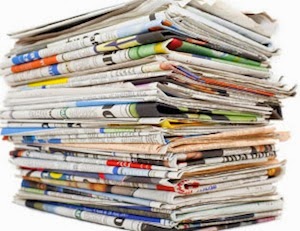A film poster is a poster used to advertise a film. It’s a simple
enough concept, right? However, creating a striking movie poster is an art. It
requires design, innovation, and intrigue. Some feature illustrations of a film
scene or an array of overlaid images from several scenes. Other posters have
used artistic interpretations of a scene or even the theme of the film,
represented in a wide variety of artistic styles.
Some get it right. Some get it wrong. Some hit it out of the
ballpark. A great movie poster doesn't just show you who is in the
film, but how it will make you feel. Successful posters catch your eye, while
misses just leave you scratching your head. Here are our picks for the best and
worst posters of the year.
BEST
1. Stoker
Hand-drawn, equal parts beautiful and creepy, this is vaguely
Burton-esque, with its coffins and insect-y plant-life.
A little treasure trove of elements from the film, we could stare
and dissect this for hours. What is the purpose of every little detail? Who
died? Guess that’s why it’s a great film poster. It catches your attention, and
you want to see what it’s all about.
2. Spring Breakers
True, James Franco’s been airbrushed to hell (and back), and
there’s something slightly uncomfortable in the apparent exploitation of these
bikini-wearing babes.
There’s no denying, though, that this ad campaign was both
eye-catching, enticing and massively memorable. It shows the whimsy, the
sexiness, the danger, and the personality of the movie as a whole. Say what you
will about the film and its themes, but aesthetically, it’s a special kind of
candy-cane brilliant.
3. The Secret Life Of
Walter Mitty
Ben Stiller’s latest movie is one of those genre-defying oddities
that we love, and the poster makes no bones about the fact that Walter Mitty is
almost impossible to pigeon hole.
It’s an enigma in itself, showing Stiller walking up the side of a
building. Is he a superhero? Is this Inception 2? Is he daydreaming? We’ll have
to watch the movie to find out…
WORST
1. Don Jon
Brilliant film, terrible poster. Failing entirely to capitalize on
the sexy subject matter at the heart of Joseph Gordon Levitt’s directorial
debut, it’s almost as if this one-sheet is purposefully trying NOT to be sexy.
Which is probably the point, but… what a missed opportunity. A
screen grab from one of the film’s atmospheric nightclub scenes would have
worked much better. This collage of actors shows the A-list stars but you
wouldn’t have any idea what this film is about. Bad. Bad. Bad.
2. Grown Ups 2
It’s Grown Ups 2, so of course it’s going to be rubbish, but the
unapologetic sexism in this ad is what really grates.
According to the Sandler universe, all men are adorably fun-loving
vagabonds, while their Barbie doll other halves are eye-rolling kill joys. This
is 2014, right? Good, just checking. Try a little harder for Grown Ups 3, okay?
That is if there is one…
3. The Heat
Melissa McCarthy's totally unrecognizable in this one-sheet, which
sort of defeats the point of putting her on the poster in the first place –
surely Fox wanted to capitalize on her soaring profile? The film was actually
pretty funny so this poster didn’t do a good job of depicting that.
In an era where we increasingly know almost every single thing
about a movie before we actually pay for a ticket, movie posters don't quite
serve the same marketing purpose that they used to ... but still, there are few
pleasures better known to a film fan than walking past a perfectly conceived
one-sheet on your way into the theater, that single image as hype-worthy as any
two-minute trailer. Which one is your favorite vs. which one causes the most
eye sore? Let us know!
Perhaps we can help you create your LARGER than life Posters, Banners and Graphics! Let’s work together to help you produce the BEST poster of 2014. www.marketinkgroup.com





































